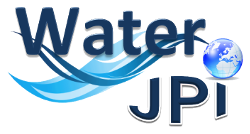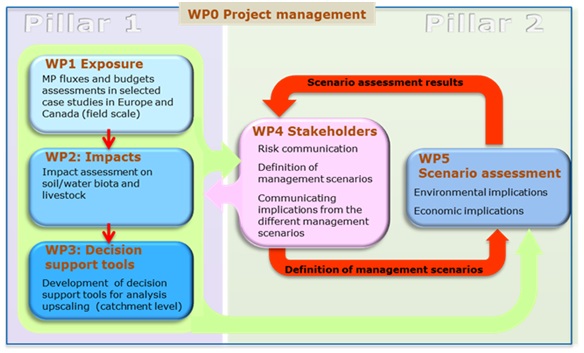IMPASSE
|
IMPASSE – Impacts of MicroPlastics on AgrosystemS and Stream Environments |
|||||||||
 |
Coordinator: Luca Nizzetto |
||||||||
|
Projects Partner and Institution: |
|||||||||
|
Key words: Microplastics, Ecotoxicology, Fate and distribution model, Agriculture, water management |
|||||||||
|
Abstract: Microplastics (MP) are an environmental problem of great concern. Contaminated sewage sludge used as fertilizer can be an important input of MPs to agricultural fields and their downstream water environments. At the start of the project, very little information was available on the occurrence, behaviour and impacts of MPs in soils. IMPASSE provided the seminal experimental and conceptual work to solve these knowledge gaps. The project was originally a collaboration between five research institutes NIVA (Norway, Coordinator), IMDEA (Spain), SLU (Sweden), University of Amsterdam (the Netherlands) and Trent University (Canada). During the project period this consortium was extended to two new partners: University of Windsor (Canada) and University of Ljubljana (Slovenia). The scientific objectives were to assess MP inputs from the use of sewage sludge into representative agricultural fields, assess MP accumulation in soil, their possible release to freshwater ecosystems and potential impacts on soil and water organisms. IMPASSE contributed with seminal advances in the area of microplastic analysis by validating a method for measuring MPs down to a size of 50 microns in complex samples, e.g., soils and sludge. The method was applied to several hundred samples during the project; an effort that required over 3500 hours of laboratory work. We analysed samples from two case studies in Canada and Spain with different climate and soil characteristics. In both cases, we found that sewage sludge used as fertilizer contained a large number of MPs (e.g. > 10,000 MP particles/ kg dry weight, equivalent to hundreds of mg to grams of MPs). In both studies, we found that soils with a long history of sludge application contained more MPs than recently treated soils or soils that had never received sludge, suggesting that sludge is an important source of MPs and soils can retain MPs over multiple years, leading to a progressive increase in soil contamination. We found also that MPs can be released from soils following intense rains. This was the case during the study in Canada. We estimated that intense precipitation caused a rapid mobilization of a majority of recently added particles to soil demonstrating agricultural soils can act as sources of MP to receiving waters. Low intensity precipitation generally mobilized a very small fraction (i.e. <1%) of the particles as observed in dedicated experiments conducted in Spain. Over time, even background rates of mobilization can contribute to the delivery of large amounts of MPs to downstream aquatic ecosystems. After upscaling this background release to the area of soils treated with sludge in Europe and North America, we estimated that tens-to-hundreds of tonnes of MPs are released every year to aquatic ecosystems from farmlands. We further demonstrated that river sediments and stream water in the studied agricultural catchment contains considerable amounts of MP. Surprisingly, for both the Spanish and Canadian study, we estimated that under normal conditions (i.e., outside periods of flooding or extreme precipitation) a large part of these MPs originated from sources other than biosolids-treated agricultural soils. We have also conducted a series of toxicological tests on freshwater and soil organisms that confirmed ingestion of MPs by terrestrial and aquatic invertebrates. Observable effects on mortality were minimal at environmentally relevant concentrations. In some soil organisms, however the presence of MPs affected organisms’ biomass development, reproduction, energy reserves and immune responses. We also found that some organisms can modify MPs characteristics. For example, earthworms produced faeces containing polyester microfibers shorter than those added to their food during the test, suggesting they can break them during digestion and release smaller and possibly more mobile MPs. All together, we concluded that despite limited risk of MPs at environmentally realistic exposure levels were observed, prolonged exposure can negatively impact soil organisms. Finally, we used the data from the studied agricultural environments to create and apply a unique, catchment-scale mathematical model of MP behaviour in soils and freshwaters. The model is the first and only of its kind and showed the ability of predicting the order of magnitude of MPs levels in river sediments as a function of realistic climate and hydrological conditions. The project has so far delivered 9 scientific papers on international journals including highly cited articles, a number of conference presentations and popular science publications. Furthermore, we have engaged regularly with a stakeholders in the private (water Industry and farmer organizations) and governance sector at national (Environmental agency and ministry) and international (EU DG Environment) level to ensure societal impacts from the project and an effective contribution to the strive of protecting environment and agricultural fields from plastic pollution. |
|||||||||
|
Project structure: |
|||||||||
|
Implementation: In order to obtain the necessary information to calibrate and assess the model we conceived the activities in WP1 (exposure). These include the first analysis of MP inputs, accumulation and releases from farmed fields treated with wastewater and sludge. The knowledge and tools developed in Pillar 1 (WP1-3) will be used in Pillar 2 for conveying information to the stakeholder group. The group will include representative of farmers, water utilities and governance from each of the selected 3 case studies. The case studies will be selected to represent farming catchments in which sewage and/or waste water are used as fertilizer or for irrigation. Through a tailored communication we will involve stakeholders in elaborating suggestions for possible mitigation measures. The implication of the suggested management scenarios will be analyzed under an environmental lens (using INCA-MPs) and with the new information on effects (WP2)) and an economic lens (through an original analysis of cost-benefits, co-benefits and trade-offs). WP4 and WP5 are linked by a loop representing the interactive mechanisms underpinning stakeholders’ involvement in our project. This mechanism, fully meeting the joint call requirements, is of great importance and great added value. |
|||||||||
|
Outcome/deliverables: |
|||||||||
|
Deliverables: |
|||||||||
|
References coordinator and leaders of each WP: |
|||||||||
|
Main outputs:
Results of the project: Data and resources |
|||||||||
|
Contact Point for Communication/Dissemination activities: Sindre Langaas (NIVA) |
|||||||||
|
Contact Point for Open Data/Open Access activities: Luca Nizzetto (NIVA) |
|||||||||

